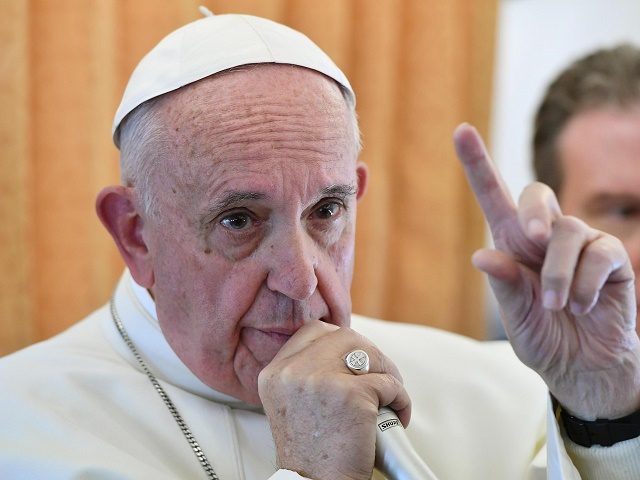During the papal press conference on the return flight from Sweden to Rome Tuesday, Pope Francis confirmed that the Church’s longstanding ban on women priests is final and not subject to change.
During his two-day visit to the Scandinavian country, where he met with Archbishop Antje Jackelen, the first female primate of the Lutheran Church of Sweden, Pope Francis was asked by a Swedish journalist whether the Catholic Church might one day have women priests and bishops.
In responding, Francis said that the question was settled by Pope John Paul II in 1994, stating that “his final word was clear and this remains”.
The journalist pressed further, asking, “Really? Never?” to which the Pope responded, “If one carefully reads the declaration of St. John Paul, it goes in that direction, yes.”
In its 2,000-year history, the Roman Catholic Church has never ordained women to the priesthood, but despite this fact, the Pope stressed that women are crucial to the Church, specifically from a “Marian dimension.”
“In Catholic ecclesiology there are two dimensions to think about,” he said. “The Petrine dimension, which is from the Apostle Peter, and the Apostolic College, which is the pastoral activity of the bishops, as well as the Marian dimension, which is the feminine dimension of the Church.”
Francis underscored that the Holy Mother Church “is a woman,” and that the Church’s “spousal mystery” as the bride of Christ can help us to understand these two dimensions.
“I ask myself: who is most important in theology and in the mysticism of the Church: the apostles or Mary on the day of Pentecost? It’s Mary!” he said.
The Church “doesn’t exist” without this feminine dimension, or “maternity,” the Pope said, because the Church herself is feminine.
Francis said that he thinks women “can do so many things better than men, even in the dogmatic field,” but noted that it is different from the role of priests and bishops in the Petrine dimension.
In his 1994 declaration on the matter, Pope John Paul II invoked his full papal authority in order to put the matter of women priests to rest.
“Wherefore, in order that all doubt may be removed regarding a matter of great importance,” he wrote, “a matter which pertains to the Church’s divine constitution itself, in virtue of my ministry of confirming the brethren, I declare that the Church has no authority whatsoever to confer priestly ordination on women and that this judgment is to be definitively held by all the Church’s faithful.”
In his declaration, John Paul cited his predecessor, Pope Paul VI, noting that the reasons behind the Church’s judgment included the example recorded in the Sacred Scriptures of “Christ choosing his Apostles only from among men,” the “constant practice of the Church,” which has imitated Christ in choosing only men, and “her living teaching authority which has consistently held that the exclusion of women from the priesthood is in accordance with God’s plan for his Church.”
While consistently upholding this teaching, Pope Francis has insisted that woman need to play a larger and more visible role in the Church.
“It is necessary to broaden the spaces for a stronger presence of women in the Church,” Francis said in a 2013 interview. “Women in the Church are essential. Mary, a woman, is more important than the bishops. I say this because we must not confuse function with dignity.”
The Pope also called for a greater effort to develop “a profound theology of women,” adding that the “feminine genius is needed in places where important decisions are made.”
“The challenge today is this: to reflect on women’s specific role even in the very places where authority is exercised in the various spheres of the Church,” he said.
Follow Thomas D. Williams on Twitter Follow @tdwilliamsrome

COMMENTS
Please let us know if you're having issues with commenting.